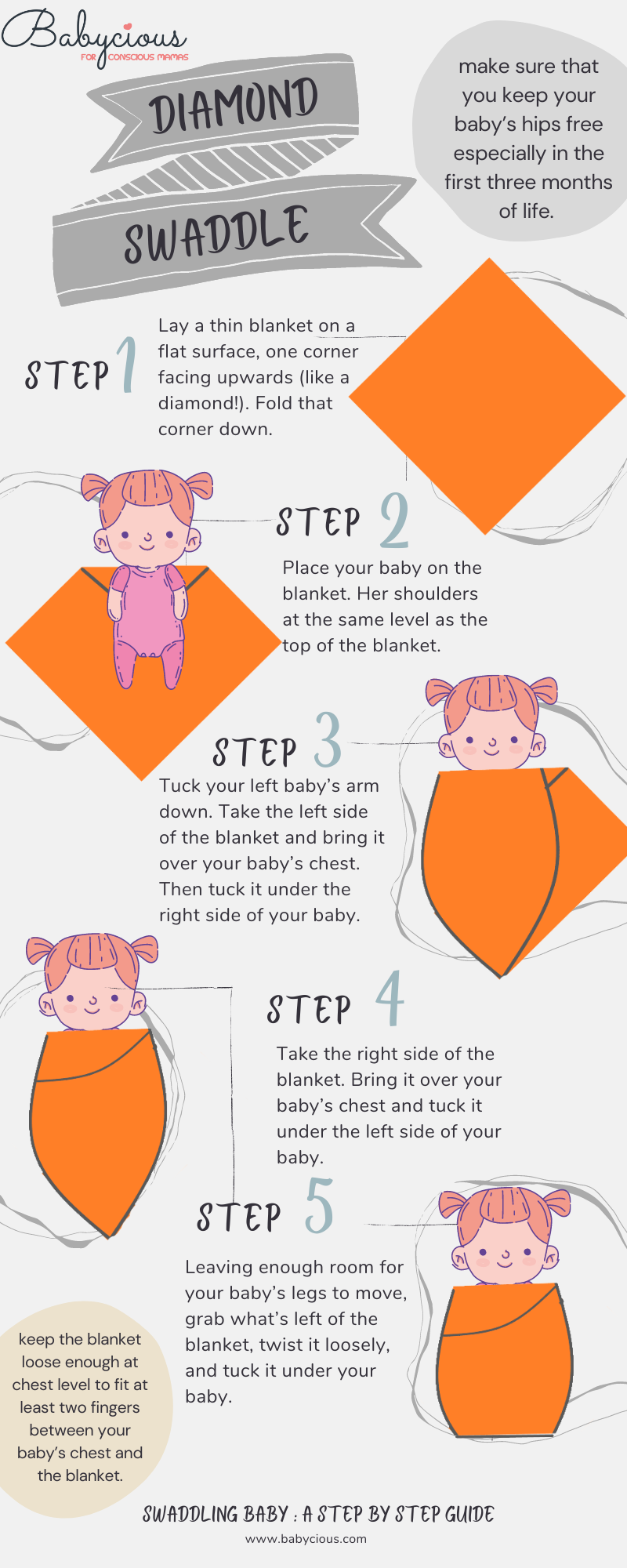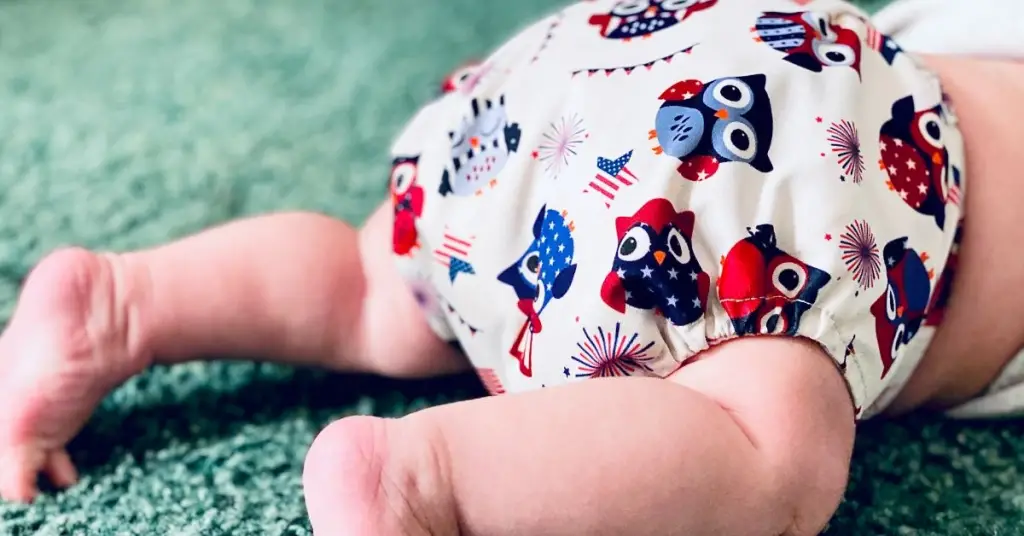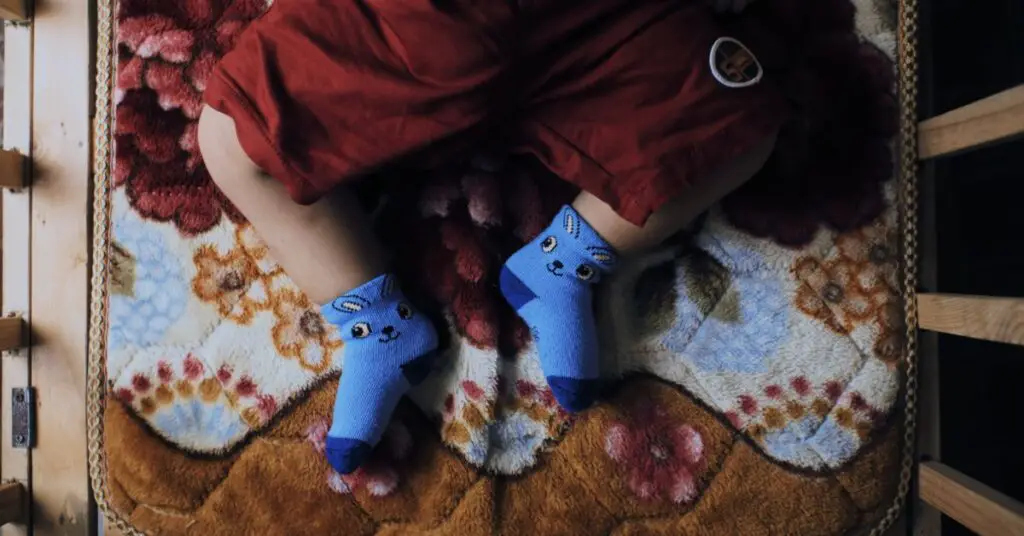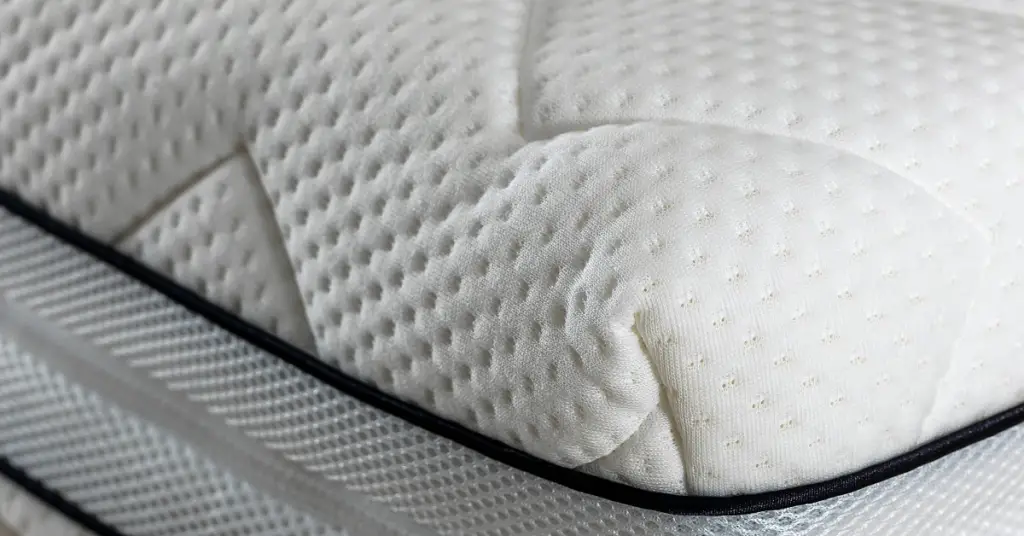Swaddling can have magic effects on babies’ sleep if done correctly. Find out all you need to know this complete swaddling baby guide.
The products mentioned on this page were independently selected by Babycious editors. As an Amazon Associate, Babycious may earn a commission from qualifying purchases.
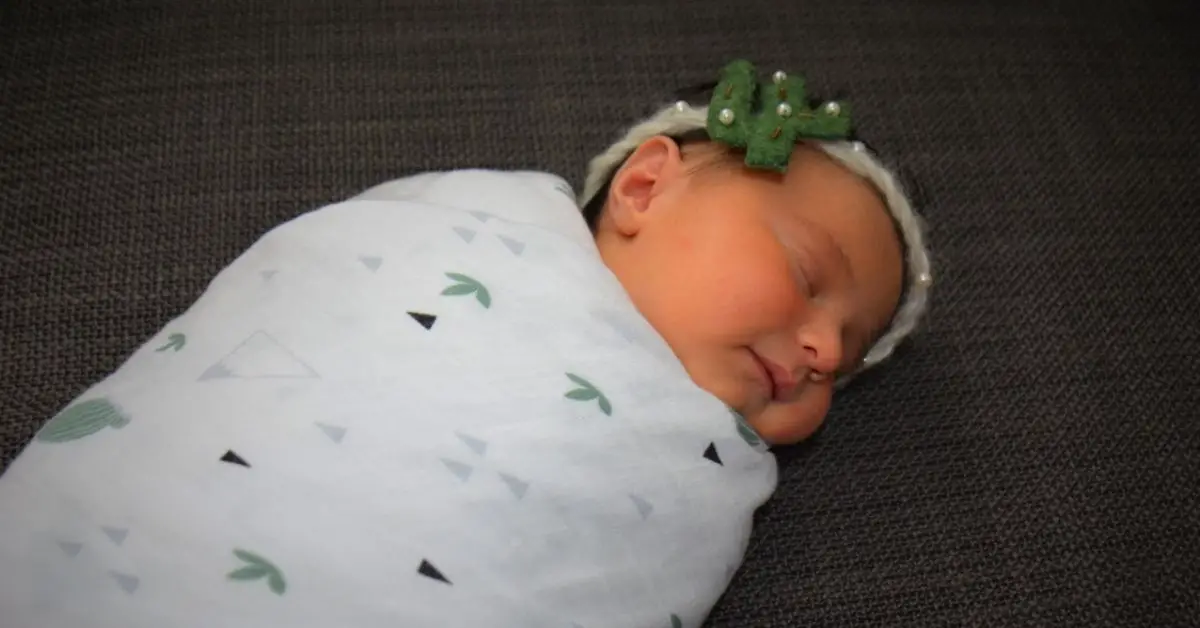
Have you ever seen a “baby burrito” soundly sleeping and wondered about the secret behind this peaceful slumber? Swaddling baby is the word for it! It has helped parents and caregivers for many years and will still help many more in the years to come!
In this article, we tell you all about the benefits and risks of this technique, and we answer the most recurring questions about swaddling. We have also included step-by-step swaddling techniques to get you started on the right track in this guide. So keep on reading!
What Is Swaddling?
Swaddling means securely wrapping a baby in a cloth or a thin blanket. It’s a centuries-old technique that has proven to provide comfort for newborns and help them go to sleep. The act of snuggly wrapping a baby constricts the movement of their limbs. This makes the baby feel as if they were still in the womb, which brings them a feeling of safety and comfort, especially in that “fourth trimester,” where the baby is still not used to life outside the womb.
In the past, caregivers used to go even further than simply wrapping babies. They also used swaddling bands. This is no longer done in this modern age. But swaddling in its broader form has definitely made it come back to the baby care scene.
In most US hospitals nowadays, most babies are delivered to their parents after birth snuggly wrapped in a cotton receiving blanket.
Benefits of Swaddling
Many parents find that swaddling their babies helps them find peace and comfort and notice a considerable improvement in sleep. In fact, a study shows that 19.4% of British babies are swaddled at night. Here are some of the most significant benefits that come with swaddling your baby.
Better Sleep for Your Baby and For You!
Swaddling is known to be a key element in soothing babies and helping them go to sleep.
When they are wrapped securely in a receiving blanket or muslin cloth, babies feel more calm and secure because it reminds them of their position in the womb where they didn’t have enough room to wiggle about.
When swaddled, babies can’t move their limbs freely. This helps reduce the “Moro reflex” in babies. The Moro reflex, also known as the startle reflex, is one of many reflexes that babies are born with. It causes babies to suddenly move when startled by stimulation triggers like a loud noise or some bright light. If this happens when they are sleeping, it is very likely to wake them up.
While the Moro reflex is not a cause to worry, if anything, it’s an indication that your baby is healthy, it can be troublesome if you want your baby to get a good nap or a good night’s sleep. Swaddling is one sure way to help your baby continue sleeping even when startled since she can’t move her arms and legs and wake herself up. This generally results in your baby getting longer stretches of quality sleep.
The feeling of security that comes with being swaddled makes babies sleep better and also cry way less than if they weren’t swaddled, and you might get some better sleep yourself as a precious bonus!
Reduces the Risk Of SIDS
Recent studies have found that the risk of SIDS, or Sudden Infant Death Syndrom, is reduced when babies are swaddled. That’s because swaddling is a way of ensuring that your baby sleeps in a supine position, which means sleeping on the back. Putting babies to sleep on their backs is already recommended by the American Academy of Pediatrics in order to decrease the incidence of SIDS.
When a baby is swaddled in the recommended supine position, they are more likely to maintain this safe sleeping position. Thus significantly reducing the risk of SIDS.
Keep in mind that this only applies to babies who have not started rolling over independently.
Risks of Swaddling
The risks associated with swaddling babies are only present when the baby is not swaddled correctly. Make sure you scroll down a bit for the step-by-step swaddling techniques and the guidelines for safe swaddling.
Increases the Risk of SIDS (if Not Done Correctly)
It may seem contradictory that we’re mentioning the risk of SIDS both in the benefits and in the risks associated with swaddling. But it’s worth mentioning that babies can be at a higher risk of SIDS if swaddled and put to sleep on their stomach or side.
The journal of Pediatrics published a study that showed that babies who were swaddled then put on their front to sleep were more at risk of SIDS, especially when babies are older than 6 months.
Swaddling is meant to keep babies in the safest sleeping position, which is on their backs, to reduce the risk of SIDS.
Hip Dysplasia (if Not Done Correctly)
Hip dysplasia is a condition where the hip becomes wholly or partially dislocated. The risk of developing hip dysplasia can be increased by swaddling babies’ legs too tightly in the extended position.
Newborns are not used to their legs being straight. They spent their whole time in the womb in the fetal position where legs are bent up, not straight. So keep that in mind while swaddling your baby. Always make sure to be gentle on your baby’s soft hips when swaddling her or even changing her diapers.
Overheating (if Not Done Correctly)
Babies, especially newborns, have trouble regulating their body temperature. Babies can overheat if the swaddle is too tight and the fabric is not breathable.
Make sure you check on your baby to avoid letting her get too hot. This can be more of an issue in the summertime. Some signs that your baby is too hot are if she starts sweating, gets damp hair, her cheeks flush, or starts breathing rapidly. If that’s the case, break your baby from the swaddle immediately.
The blanket that you want to use for swaddling has to be made of breathable, thin fabric like muslin. Staying away from thick or heavy blankets reduces the risk of overheating and will help keep your baby cool and comfortable when swaddled.
Also, try not to breastfeed your baby while she’s swaddled. Breastfeeding can bring your baby’s temperature up, so she might be at risk of overheating.
Swaddling Techniques: Step by Step
There are several ways to swaddle babies. We’ll show you step by step three popular and beginner-friendly techniques that you can start using right away.
Just make sure that you keep your baby’s hips free, especially in the first three months of life. And keep the blanket loose enough at chest level to fit at least two fingers between your baby’s chest and the blanket.
Square Swaddle
Step 1
Lay a thin blanket on a flat surface (this can be a bed or a changing table), one straight side facing upwards (like a square). Leave some room above the blanket where your baby’s head will be.
Step 2
Place your baby on the blanket. Her shoulders at the same level as the top of the blanket.
Step 3
Tuck your baby’s left arm down. Take the left side of the blanket and bring it over your baby’s chest in a slightly diagonal direction. Then tuck it under the right side of your baby.
Step 4
Take the right side of the blanket. Bring it over your baby’s chest and tuck it under the left side of your baby.
Step 5
Leave enough room for the baby’s legs to move, and take the bottom part of the blanket. Bring it over your baby’s chest. At chest level, tuck the left side of the blanket under your baby’s left side, and tuck the right side of the blanket under the right side of your baby.
Diamond Swaddle
Step 1
Lay a thin blanket on a flat surface, one corner facing upwards (like a diamond!). Fold that corner down.
Step 2
Place your baby on the folded blanket. His head out of the blanket, his shoulders on the folded corner, and his body on the blanket.
Step 3
Tuck your left baby’s arm down. Take the left side of the blanket and bring it over your baby’s chest. Then tuck it under the right side of your baby.
Step 4
Take the right side of the blanket. Bring it over your baby’s chest and tuck it under the left side of your baby.
Step 5
Leaving enough room for your baby’s legs to move, grab what’s left of the blanket, twist it loosely, and tuck it under your baby.
Sleepsack swaddle
If you don’t like the idea of putting your baby to sleep in a blanket. There are sleep sacks that were designed for swaddling the baby while leaving the baby’s legs free to move.
The sleepsack swaddle is a wearable blanket that has a swaddle attached to it. It is easier to use than a loose blanket and will be less likely to come loose while your baby is sleeping or moving around. Most sleepsack swaddles have velcro straps that help secure them in place.
Here’s how to swaddle your baby using a sleepsack swaddle:
Step 1
Put your baby into the sleepsack part of the sleepsack swaddle. Stretch the “wings” of the swaddle to the sides of your baby.
Step 2
Tuck your left baby’s arm down. Take the left wing of the swaddle and bring it over your baby’s chest. Then tuck it under your baby’s chest on the opposite side.
Step 3
Take the right-wing of the swaddle. Bring it over your baby’s chest and fasten it under your baby’s back using the velcro strips. Securing the swaddle this way will ensure the baby’s arms will stay in place.
Step 4
The bottom velcro strip has to be attached loosely, so your baby’s legs are not constricted. Check that your baby’s hips are loose and that his legs can move freely.
Here’s a video from the International Hip Dysplasia Institute that shows you how to swaddle your baby to prevent putting him at risk of developing hip dysplasia:
How to Safely Swaddle Your Baby?
By learning how to swaddle your baby the correct way, you stay away from the risks we have mentioned above in this guide, and you can safely enjoy the benefits of swaddling. Here are some basic guidelines you need to keep in mind for safe swaddling.
Keep Baby’s Hips Free
It is important to always leave some room for your baby’s legs to move about. Babies’ hips, especially in the first three months of life, are very fragile.
When you’ve finished swaddling your baby, always double-check that the fabric around the baby’s hips is loose enough and that the legs are not constricted.
Use a Thin Breathable Swaddle
If you’re not using a sleepsack type of swaddle, make sure the blanket you’re using to swaddle your baby is made of natural fiber and is not too thick or too heavy. Here are some fabric options that are light and breathable, so they work well for swaddling:
- Cotton muslin – is a popular swaddling fabric because it’s soft and very light. It’s also a durable fabric that gets softer the more you wash it.
- Cotton gauze – You can use cotton gauze to swaddle your baby. It’s very lightweight and a little stretchy, so it stays in place when you tuck it under your baby.
Always Put Your Baby to Sleep on Their Back
Swaddle or no swaddle, always put your baby to sleep on their back. According to the American Academy of Pediatrics, this is the safest sleeping position. Lying babies on their backs, as opposed to on their stomachs or on their side, was shown to greatly reduce the risk of Sudden Infant Death Syndrome. It ensures that baby can breathe safely at all times.
When a baby is swaddled, this is even more important because your baby won’t be able to adjust her position when swaddled.
When to Stop Swaddling?
While swaddling is excellent for newborns, you need to pay attention to your baby’s developmental milestones and stop swaddling her as soon as she shows signs of rolling over on her own. Once a baby starts rolling over, he becomes at risk of putting himself on the stomach while being swaddled and ends up laying face down.
Rolling over can happen as soon as 2 months of life. So watch out for this skill.
How to Transition out Of Swaddle?
When it’s time to transition your baby out of swaddle, we recommend that you do it gradually:
- Try half swaddling your baby before taking her out of the swaddle completely. Start by taking one arm out of the swaddle for some nights and then switch the arm you are taking out for some more nights and then take them out both.
- Once your baby gets adjusted to sleeping with her arms unswaddled, you can take off the swaddle altogether during daytime naps first when he’s going to sleep for a shorter amount of time. This will help build up his tolerance for the “free sleep” way.
- Lastly, take your baby out of the swaddle every other night before you wave goodbye to swaddling for good.
Some transitioning swaddles can make this task easier, like the magic merlin sleepsuit, which will keep your baby cozy and snug. Your baby will still be able to move easily in this swaddle as it is just tight enough to muffle significant movement and doesn’t bind the hips and legs.
Is Swaddling Baby Safe at Night?
As long as you stick to the basic safety guidelines for swaddling, swaddling your baby at night is not an issue. In fact, it might help your baby sleep more soundly and for longer stretches of time.
In addition to the safety tips we presented above, make sure that the blanket you swaddle your baby with won’t come unwrapped during his bedtime and present a risk of covering your baby’s face. Keep in mind that you should keep your baby’s crib free from any loose blankets or objects that could interfere with her breathing, including a loosely wrapped blanket.
How Many Swaddles Do You Need?
Starting from scratch, we recommend you go by the rule of three. One swaddle on, one swaddle to wash, and one to spare is suitable for a start, especially if you are using actual velcro swaddles that can be a bit pricey. But knowing how messy newborn life is, one swaddle might not even get you through the day. If you want to spare yourself some laundry, it’s better to have more on deck! Consider getting four to six swaddle blankets if you don’t want to do laundry often.
The plus side with getting many swaddle blankets is that they are helpful for so much more than just swaddling. Swaddle blankets, especially muslin ones, are always useful to have on hand. They can easily double as burp cloths or as a play mat for your baby. And they are always handy to have for quick cleanups in the early months of your baby’s life where spitting up is second nature! You’ll be happy you got them.
Before You Go
Now that you know all about swaddling. Go ahead and give it a try.
Of course, not all babies are the same. While most babies will find a safe haven in being swaddled and enjoy it, some babies might fight being swaddled. But the experience proved that a baby generally sleeps more peacefully with a swaddle. Just be sure that you follow the correct technique for swaddling.
So try it for yourself, and let us know how it went!
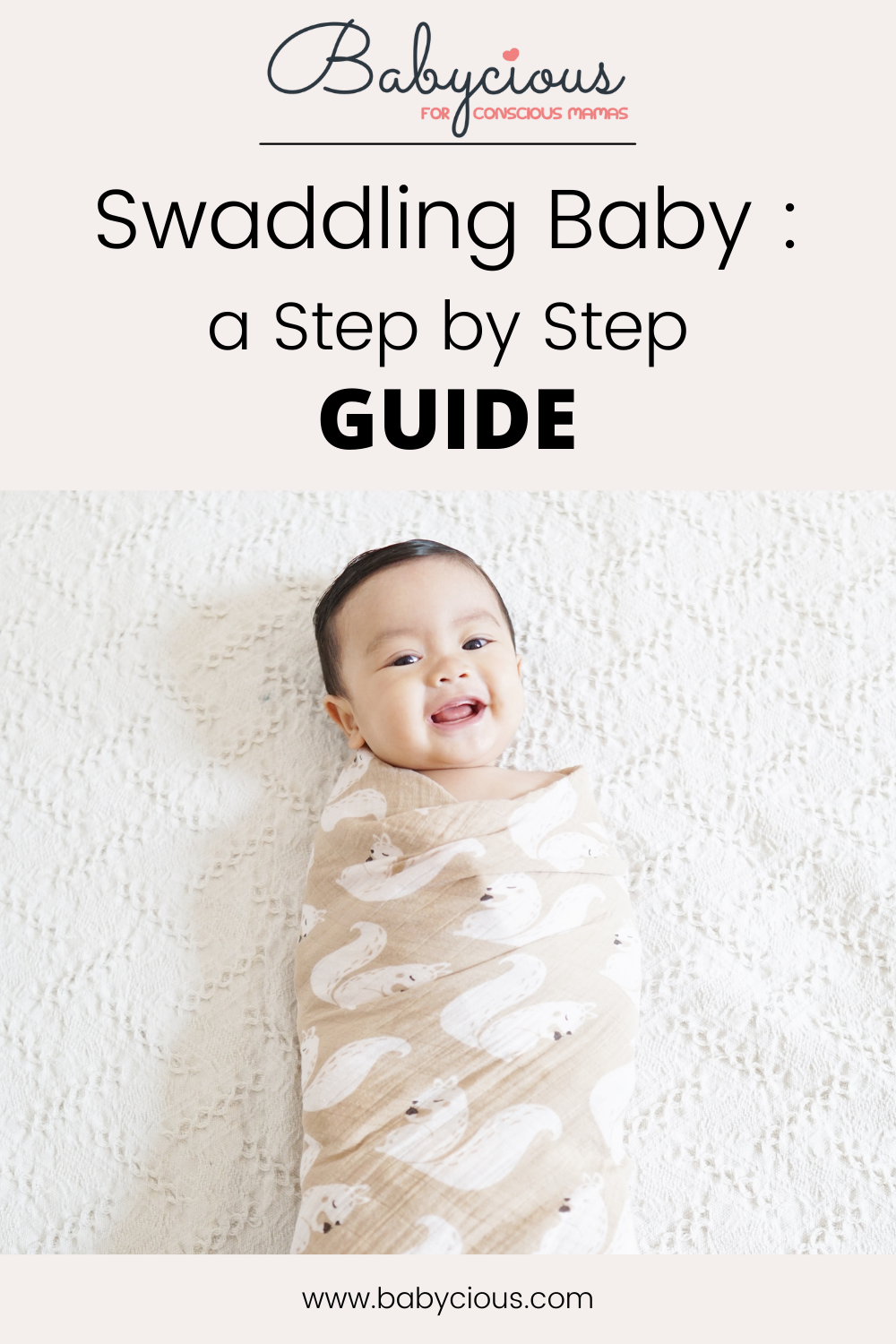
The purpose of this article is informative and educational only. It’s not a substitute for medical consultation or medical care. We do not accept any responsibility for any liability, loss, or risk, personal or otherwise, incurred as a consequence, directly or indirectly, from any information or advice contained here. Babycious may earn compensation from affiliate links in this content.
